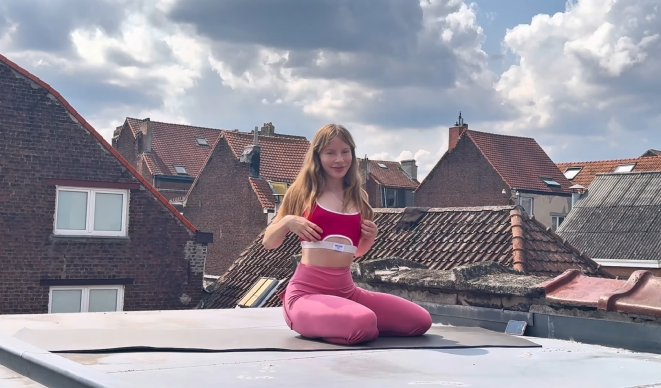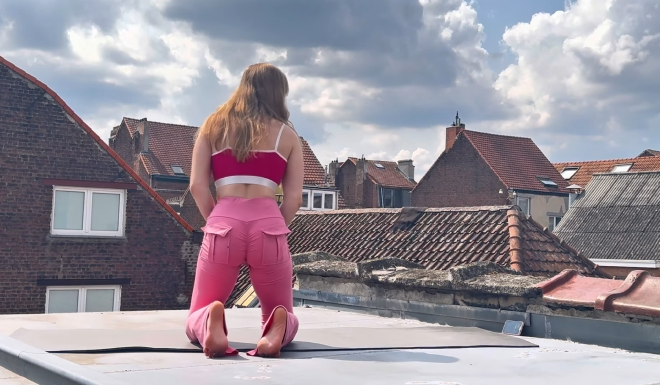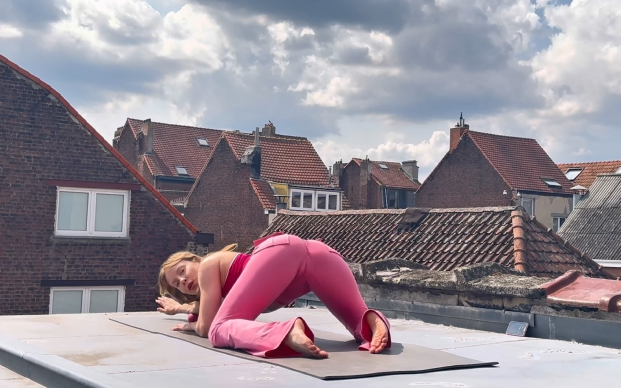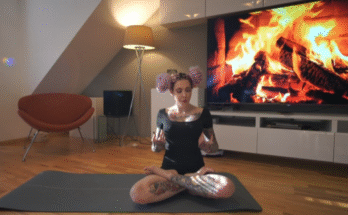
In today’s fast-paced world, finding time to visit a gym or attend a yoga studio can be challenging. However, maintaining flexibility, improving posture, and reducing stress are essential for overall health. This is where a home workout full body stretch routine comes in. With just a few minutes each day, you can stretch all the major muscle groups, boost blood circulation, and enhance mobility without leaving your home. Whether you are a beginner or someone with experience, incorporating a full body stretch into your daily routine will help you feel more energized and balanced.
Why Full Body Stretching is Important
Stretching is often underestimated compared to strength training or cardio workouts, but it plays a crucial role in overall fitness. A good full body stretch routine helps to:
- Increase Flexibility: Stretching improves the length and elasticity of your muscles and tendons, making daily activities and exercise easier.
- Prevent Injuries: Flexible muscles and joints are less prone to strains and injuries, especially during sudden movements.
- Reduce Muscle Tension: Stretching relaxes tight muscles, particularly after a day of sitting or intense workouts.
- Improve Posture: By lengthening the muscles that tighten from bad posture (such as those in the shoulders, chest, and hips), stretching helps correct alignment.
- Boost Blood Circulation: Stretching encourages better blood flow, which promotes healing and reduces muscle soreness.

How to Prepare for a Full Body Stretch
Before starting any stretch routine, it’s best to warm up for 3-5 minutes to prepare your muscles. You can do simple moves like arm circles, light jogging in place, or jumping jacks. This warms the muscles and increases blood flow, making stretching safer and more effective.
Wear comfortable clothing that allows free movement and, if possible, use a yoga mat for added comfort and stability. Keep your breathing slow and steady throughout each stretch—this helps your body relax and deepen into the movement.
Full Body Stretch Routine
Below is a 20-minute full body stretch workout that you can do at home. It targets all major muscle groups, from the neck and shoulders to the legs and lower back.
1. Neck Stretch (1 minute)
- Sit or stand upright with your back straight.
- Gently tilt your head to the right, bringing your ear towards your shoulder.
- Hold the stretch for 20-30 seconds, feeling the tension release along the side of your neck.
- Switch sides.
- For a deeper stretch, gently press your hand on top of your head, but avoid pulling too hard.
2. Shoulder and Upper Back Stretch (2 minutes)
- Bring your right arm across your chest and hold it with your left hand just above your elbow.
- Pull your arm gently closer to your chest and hold for 20-30 seconds.
- Switch arms.
- Then, interlace your fingers and push your hands forward, rounding your upper back. Imagine trying to separate your shoulder blades. Hold this stretch for 30 seconds.

3. Chest Opener (1 minute)
- Stand tall or kneel on the floor.
- Clasp your hands behind your back (or hold a towel if your shoulders are tight).
- Push your chest forward and squeeze your shoulder blades together.
- Hold for 30 seconds while taking deep breaths.
- This stretch is great for counteracting the effects of sitting at a desk all day.
4. Side Stretch (2 minutes)
- Stand with your feet hip-width apart and raise your right arm overhead.
- Lean your torso gently to the left, keeping your body in a straight line (avoid leaning forward or backward).
- Hold for 20-30 seconds and feel the stretch along your side.
- Switch sides.
- This stretch helps elongate the oblique muscles and improves lateral flexibility.
5. Cat-Cow Stretch (2 minutes)
- Get into a tabletop position on your hands and knees.
- Inhale and drop your belly, arching your back while lifting your head and tailbone (Cow pose).
- Exhale and round your spine, tucking your chin and tailbone (Cat pose).
- Repeat this flowing motion 8-10 times.
- This is excellent for improving spinal flexibility and relieving lower back stiffness.
6. Seated Forward Fold (2 minutes)
- Sit on the floor with your legs extended straight in front of you.
- Inhale and lengthen your spine, then exhale and slowly hinge forward from your hips.
- Reach for your toes or ankles, keeping your back as straight as possible.
- Hold for 30 seconds, relax, then repeat.
- This stretch targets the hamstrings, calves, and lower back.

7. Hip Flexor Stretch (2 minutes)
- Step your right foot forward into a lunge position with your left knee on the ground.
- Push your hips forward gently while keeping your torso upright.
- Hold for 30 seconds and feel the stretch in your left hip flexor.
- Switch sides.
- If you want to deepen the stretch, raise the arm on the side of your back leg overhead and slightly lean to the opposite side.
8. Quadriceps Stretch (1 minute)
- Stand near a wall or chair for balance.
- Bend your right knee and grab your ankle with your right hand.
- Pull your heel towards your glutes while keeping your knees close together.
- Hold for 20-30 seconds, then switch legs.
- This is excellent for stretching the front of your thighs, especially after workouts.
9. Glute Stretch (2 minutes)
- Lie on your back with knees bent.
- Cross your right ankle over your left thigh (forming a “figure four” shape).
- Pull your left thigh toward your chest, feeling a stretch in your right glute.
- Hold for 30 seconds, then switch sides.
10. Standing Hamstring Stretch (1 minute)
- Stand with feet hip-width apart.
- Place your right heel slightly forward and hinge at your hips to lean toward your extended leg.
- Keep your back straight and hold for 20-30 seconds.
- Switch sides.

Tips for a Successful Stretch Routine
- Consistency is Key: Stretching once in a while won’t give you long-term benefits. Aim to stretch at least 3-4 times a week.
- Listen to Your Body: Stretching should feel like a gentle pull, never painful. If you feel sharp pain, stop immediately.
- Combine with Strength Workouts: A balanced routine of strength training, cardio, and stretching ensures better overall fitness.
- Focus on Breathing: Deep, slow breathing allows your muscles to relax and lengthen more effectively.
The Benefits of Doing Full Body Stretch at Home
Performing this routine at home has several advantages. It requires no equipment, takes little time, and can be done at any hour of the day. Stretching in the morning can wake up your body and improve circulation, while stretching at night can relax your muscles and help you sleep better. Plus, home stretching gives you the privacy and flexibility to go at your own pace without feeling rushed.
Conclusion
A home workout full body stretch is a simple yet powerful way to maintain flexibility, reduce muscle tension, and improve your overall well-being. Just 15-20 minutes a day can bring noticeable improvements in posture, mobility, and relaxation. Whether you are recovering from a workout, sitting at a desk all day, or just looking for a way to feel better physically and mentally, stretching is the answer. Start with the routine above, and soon you’ll notice how much lighter and more energized you feel.


